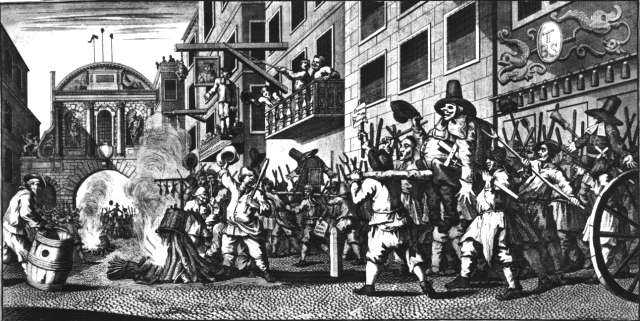Crime, Policing, and Punishment in Early Modern London
EIU His 5400.001 [60032], Summer 2013, Newton Key
9:00-11:30 M, W, Coleman 2750
Syllabus as pdf (brief version)
9:00-11:30 M, W, Coleman 2750
Syllabus as pdf (brief version)
Available from Textbook Services:
- Bucholz/Ward. Bucholz, Robert O. and Joseph P. Ward. London: A Social and Cultural History, 1550-1750. Cambridge: Cambridge University Press, 2012. [17.916]
- Hitchcock. Hitchcock, Tim. Down and Out in Eighteenth-Century London. London: Continuum, 2007. [17.917]
- McKeon. Michael McKeon, The Secret History of Domesticity: Public, Private, and the Division of Knowledge (The Johns Hopkins University Press, 2006) [17.502]
week 1.
While maskinge in their folleis all doe passe (1607) BM, AN118365001
week 2.
Richard Gough, "As the Church is now 1701," from his History of Myddle
week 3.
Pieter Brueghel the Younger (1564/65–1636), Battle of Carnival and Lent
week 4.
Order and Disorder
DISCUSSION THEME:
week 5.
Thomas Rowlandson, "Ballad Singer" (1789), National Library of Wales, PZ52
week 6.
week 7.
The Public and the Private
DISCUSSION THEME:
week 8.

William Hogarth, from Hudibras (Hudibras confronts the burning of the rumps and Sir John Presbyter)
Print Culture as Popular Culture
DISCUSSION THEME: Was there a Print 2.0 or is it a trope? If so, when was it?; what was it? Does the print/image tell us about the author/artists or the reader/viewer?
week 12. 3 April The Audiences for Printing and Writing & The Pamphlet (Google Ngram Viewer)
- Wahrman, introduction & chs. 1-2
- Jenner & McShane, “Roasting the Rump"
- Conclusion: Oral Reports (Essays due during finals)
requirements, papers, and exams
office hours